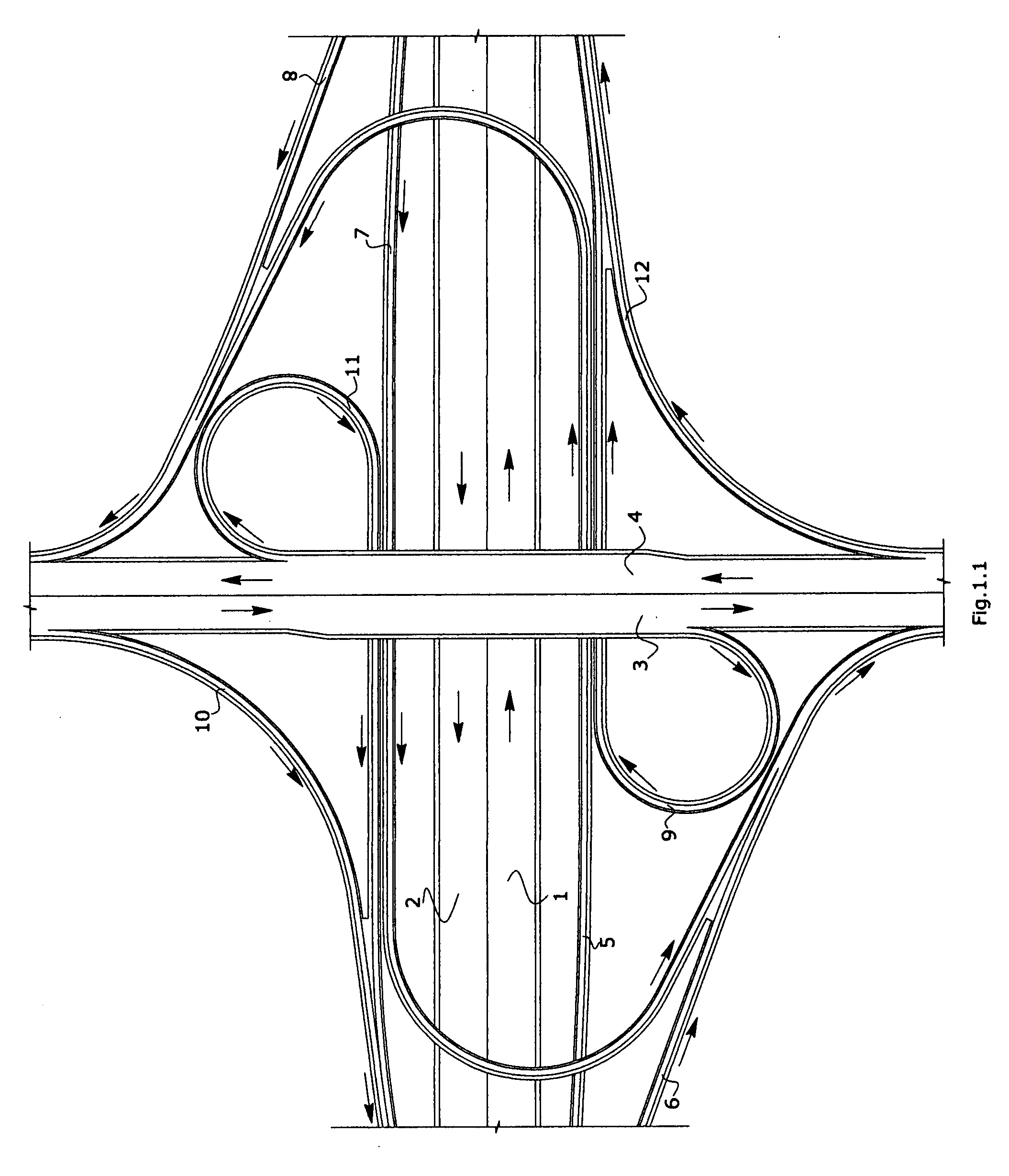Weaving free two level cloverleaf type interchange for a highway crossing under a street
a technology of cloverleaf and local interchange, which is applied in the direction of roads, roads, constructions, etc., can solve the problems of low efficiency of this interchange, section is a source of traffic congestion, and most local interchanges cannot have such large right of way for the required weaving length, etc., to achieve high efficiency and safety standard, high efficiency, and high safety.
- Summary
- Abstract
- Description
- Claims
- Application Information
AI Technical Summary
Problems solved by technology
Method used
Image
Examples
Embodiment Construction
Description of Preferred Embodiment
[0053]FIG. 1.1, FIG. 1.2, and FIG. 1.3 illustrate the preferred embodiment of the present invention. A first traveled way 1 is for traffic traveling in a first direction. A second traveled way 2 is for traffic traveling in a direction opposite to the first direction. A third traveled way 3 is for traffic traveling in a direction intersecting the first and second traveled ways 1, 2. A fourth traveled way 4 is for traffic traveling in a direction opposite to the traffic traveling on the third traveled way 3.
[0054]The first and second traveled ways 1, 2 cross under the third and fourth traveled ways 3, 4.
[0055]Each of the first and second traveled ways 1, 2 has a design speed compatible to a highway or freeway design speed or is designed according to highway or freeway design standards. Each of the third and fourth traveled ways 3, 4 has a design speed compatible to the design speed of a street, road, or a conventional highway or is designed according...
PUM
 Login to View More
Login to View More Abstract
Description
Claims
Application Information
 Login to View More
Login to View More - R&D
- Intellectual Property
- Life Sciences
- Materials
- Tech Scout
- Unparalleled Data Quality
- Higher Quality Content
- 60% Fewer Hallucinations
Browse by: Latest US Patents, China's latest patents, Technical Efficacy Thesaurus, Application Domain, Technology Topic, Popular Technical Reports.
© 2025 PatSnap. All rights reserved.Legal|Privacy policy|Modern Slavery Act Transparency Statement|Sitemap|About US| Contact US: help@patsnap.com



